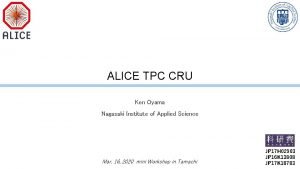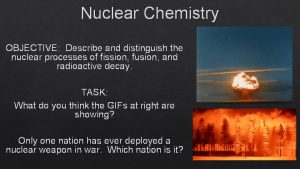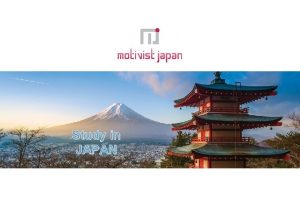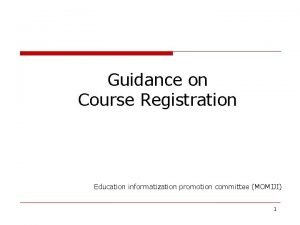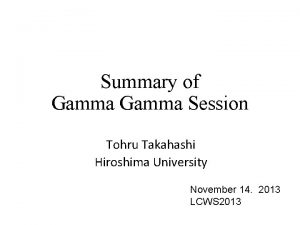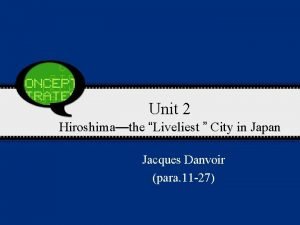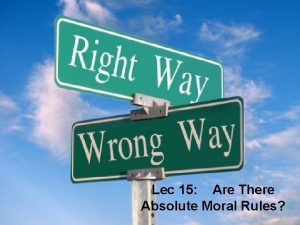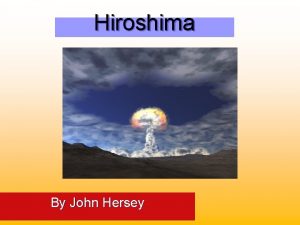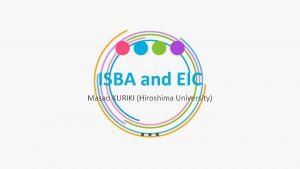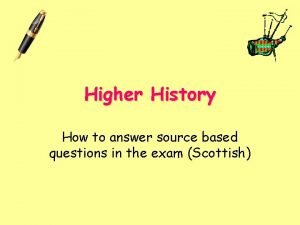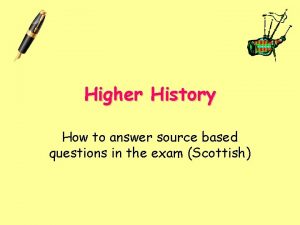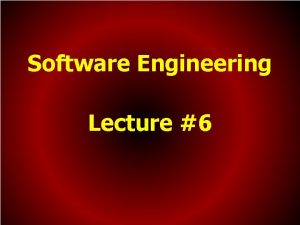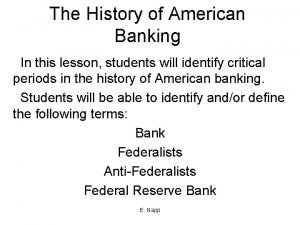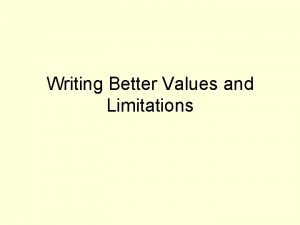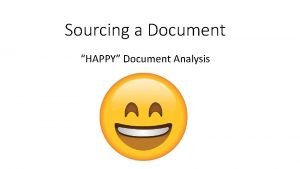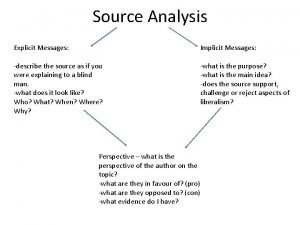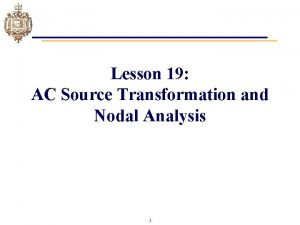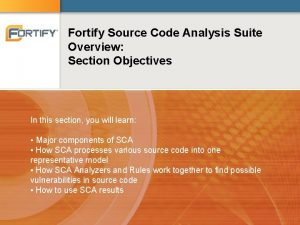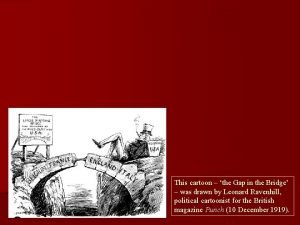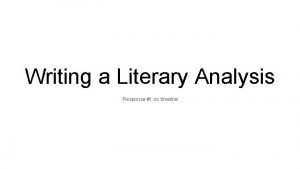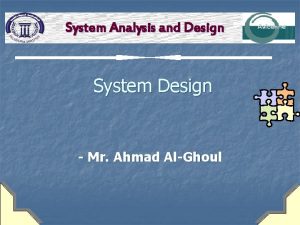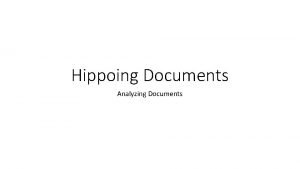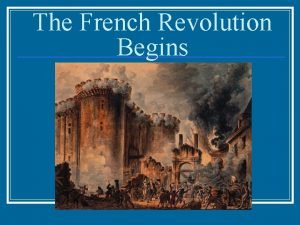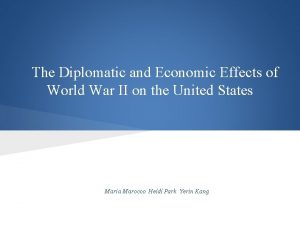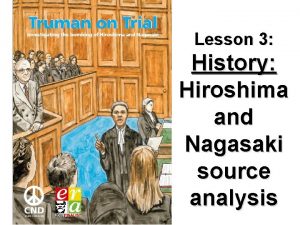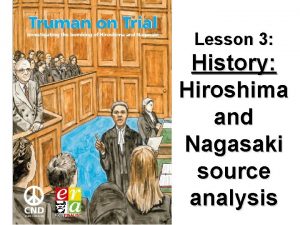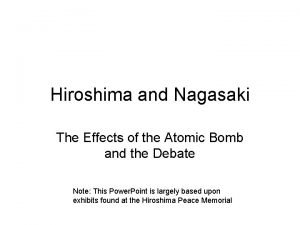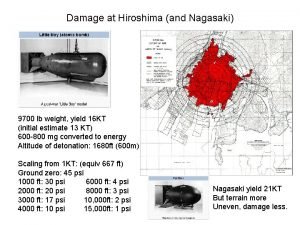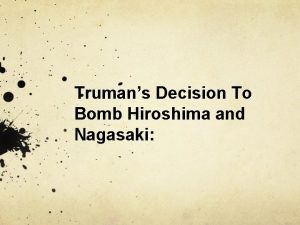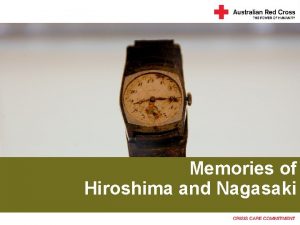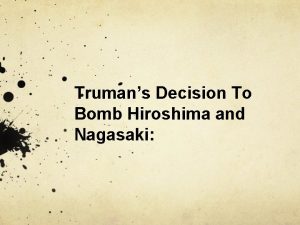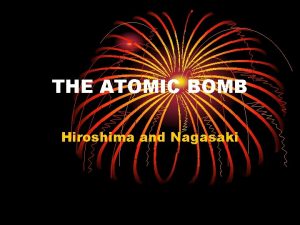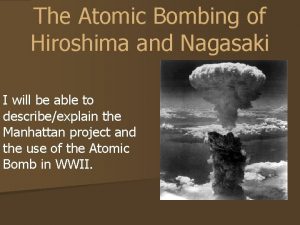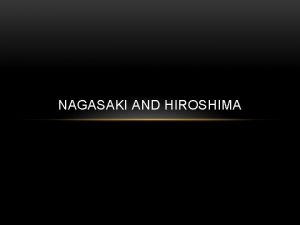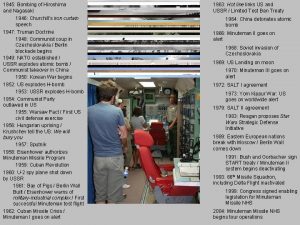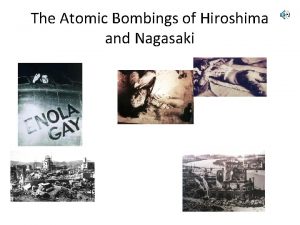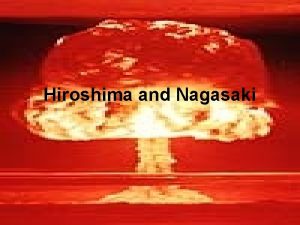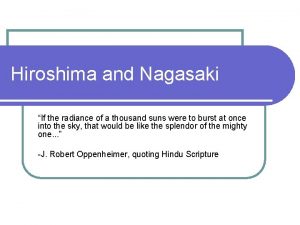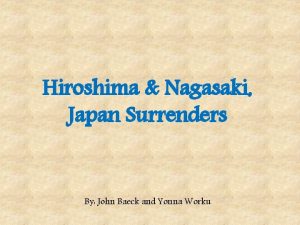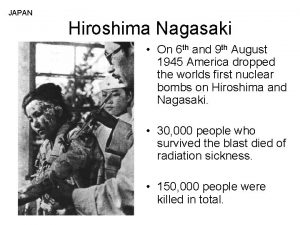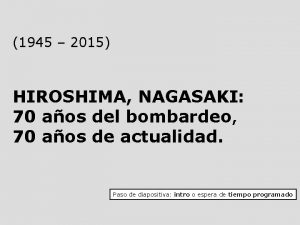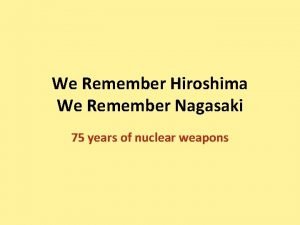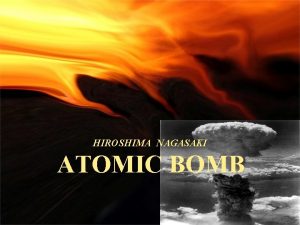Lesson 3 History Hiroshima and Nagasaki source analysis


























![“During our last weeks in the White House [1953], Prime Minister Churchill arrived for “During our last weeks in the White House [1953], Prime Minister Churchill arrived for](https://slidetodoc.com/presentation_image_h/204ae136b4728c4f5a9d051dbb8aab29/image-27.jpg)







- Slides: 34

Lesson 3: History: Hiroshima and Nagasaki source analysis

What we’ll do in this lesson: § Look at the USA’s use of nuclear weapons against Japan in August 1945 § Analyse primary and secondary sources about the bombings, and decide how useful and reliable they are

What is a nuclear weapon?

Paul L. Mc. Cord Jr. ; https: //creativecommons. org/licenses/by-nd/2. 0/legalcode ; cropped Public domain ; National Museum of the US Navy

How many nuclear weapons are there in the world today? § Nearly 14, 500 in total, but not divided equally between the 9 countries § Big decrease since the 1980 s (70, 000 warheads!), and 500 less than last year § Almost 4000 of them could be used at short notice; 5500 are in storage; and 5000 are ‘retired’ and will be dismantled in the coming years. § But: several of the countries are increasing or ‘upgrading’ theirs

Have nuclear weapons ever been used in a war?


US National Archives 7 th December 1941: Japan attacks Pearl Harbor (Hawaii). It’s a surprise attack that destroys or badly damages lots of US military ships and planes, and kills nearly 3000 Americans. The USA declares war against Japan the next day, thus entering the Second World War.

Robert Huffstutter; https: //creativecommons. org/licenses/by-nc-sa/2. 0/legalcode 8 th May 1945: Nazi Germany surrenders to the Allied Powers (Britain, USA, USSR, China, and others). This is known as Victory in Europe (VE) Day.

trinityremembered. com 16 th July 1945: The United States successfully tests the world’s first ever atomic bomb (researchers 6 miles away are knocked over by the blast wave, and those 10 miles away felt heat on their face. Then, an unbelievably bright flash of light, described as ''beautiful'', then a defeaning roar, and a mushroom cloud 8 miles high in minutes)

Lord Mariser, https: //creativecommons. org/licenses/by-sa/2. 0/legalcode Harry Kidd ; https: //creativecommons. org/licenses/by-nc-sa/2. 0/legalcode 25 th July 1945: President Truman gives the order to prepare to drop the atomic bomb on Japan (Britain gave its official consent on 4 th July; Truman took over after Roosevelt died in April. The Manhattan Project was so secret that Truman hadn’t been told about it as Vice-President! )

26 th July 1945: Truman, Churchill and Chiang Kai-shek issue the ‘Potsdam Declaration’ to Japan, which finished with the words: ‘We call upon the government of Japan to proclaim now the unconditional surrender of all Japanese armed forces. . . The alternative for Japan is prompt and utter destruction. ’ Harry. Kidd ; https: //creativecommons. org/lice nses/by-nc-sa/2. 0/legalcode

Public domain

James Vaughan ; https: //creativecommons. org/licen ses/by-sa/2. 0/legalcode

6 th August 1945: The atomic bomb is dropped on Hiroshima



Hairyegg; https: //creativecommons. org/licenses/by-sa/2. 0/legalcode

Hiroshima video clip (reconstruction) § You may find the clip disturbing. Feel free to close your eyes/look away.

Matthew Yglesias ; https: //creativecommons. org/licenses/by-sa/2. 0/legalcode 6 th August 1945: President Truman gives a statement promising further bombs if Japan doesn’t surrender

Atomic Heritage Project

9 th August 1945: The bomb is dropped on Nagasaki Wikimedia Commons

histclo. com 9 th August 1945: At midnight, the USSR invades Manchuria, in Northern China, which since 1932 had been part of the Japanese Empire. They go on to capture Northern Korea and other Japanese-occupied territories.

Public domain 2 nd September 1945: Japan formally surrenders. This is the end of the Second World War.

What are the arguments for the bombings? § Saved lives: ended the war ASAP, saving lives overall by avoiding a land invasion (the Okinawa battle saw 1/3 of US landing force killed or wounded; Churchill said the USA and Britain would lose 1 million and 500, 000 soldiers respectively) § Revenge for Pearl Harbour § Once the bomb was developed, it was always going to be used US National Archives

What are the arguments against the bombings? § Immoral: Killed 185, 000 -600, 000 - mostly civilians (Some of the leading Manhattan Projects scientists had asked decision-makers for the A-bomb to be used on ''uninhabited area'' of Japan instead, as a threat, but Truman had already decided on maximum impact, and couldn't risk failure of bomb demonstration. They only had two bombs, after all. ) § Surrender was possible: The US had intercepted telegrams showing that some of the Japanese government wanted Japan to surrender § More about sending a message to the Soviet Union
![During our last weeks in the White House 1953 Prime Minister Churchill arrived for “During our last weeks in the White House [1953], Prime Minister Churchill arrived for](https://slidetodoc.com/presentation_image_h/204ae136b4728c4f5a9d051dbb8aab29/image-27.jpg)
“During our last weeks in the White House [1953], Prime Minister Churchill arrived for a visit. My father gave him a small stag dinner to which he invited Defense Secretary Robert Lovett, [politician] Averell Harriman, [Army] General Omar Bradley, and Secretary of State Dean Acheson. Everyone was in an ebullient mood, especially Dad. Without warning, Mr Churchill turned to him and said, “Mr President, I hope you have your answer ready for that hour when you and I stand before St Peter and he says, “I understand you two are responsible for putting off those atomic bombs. What have you got to say for yourselves? ” This could have been a rather unpleasant subject. But Bob Lovett came to the rescue. “Are you sure, Prime Minister, that you are going to be in the same place as the President for that interrogation? ” Mr Churchill sipped his champagne and then intoned, “Lovett, my vast respect for the Creator of this universe and countless others gives me assurance that He would not condemn a man without a hearing. ”. . . Now the conversation was really soaring. “Oyez!” cried our Secretary of State. “In the matter of the immigration of Winston Spencer Churchill, Mr. Bailiff, will you empanel a jury? ” Everyone eagerly accepted historic roles. General Bradley decided he was Alexander the Great. Others played Julius Caesar, Socrates and Aristotle… Dad was appointed judge. The case was tried and the Prime Minister was acquitted. ” (source: Margaret Truman’s biography, ‘Harry S. Truman’, 1972, cited in Life magazine, 1 st December 1972, pp. 69 -70)

WHAT DO YOU THINK? ‘spectrum line’

Your Task: You will assess historical sources to decide how useful and reliable they are for understanding the Hiroshima and Nagasaki bombings

WHEN LOOKING AT A SOURCE WE NEED TO ASK: § Where does it come from? § What is its purpose? (Why was it written/produced? And who for? ) § What does it say? § How useful is it? (What does it tell us about the facts, the context, and/or points of view at the time? ) § How reliable is it? (How much can we trust it? )

INVESTIGATE! § Your group will be given a source about Hiroshima and Nagasaki § You will be given a sheet of questions to answer about the source § (Remember that sources can still be useful even if they aren’t reliable!) § Then get ready to present your source and ideas to the rest of the class.

Now vote on which of the sources you think is the most reliable

DISCUSS § Which source won? What makes it more reliable than the others? § Would you vote for a different source as the most useful? Why?

EXTENSION TASK • In the mock trial, did the class conclude that Truman’s decision to drop the bombs was justified or unjustified? Which sources support this view? • If you feel the opposite, which sources support your point of view, and why?
 Nagasaki location
Nagasaki location Nagasaki sorting algorithm
Nagasaki sorting algorithm Nuclear shadows
Nuclear shadows Language academy
Language academy My momiji hiroshima university
My momiji hiroshima university Tohru hiroshima
Tohru hiroshima Hiroshima the liveliest city in japan
Hiroshima the liveliest city in japan Micron memory japan
Micron memory japan Hiroshima
Hiroshima Hiroshima
Hiroshima Hiroshima
Hiroshima Higher history evaluate the usefulness
Higher history evaluate the usefulness Source based questions history
Source based questions history Sources of requirements in software engineering
Sources of requirements in software engineering Lesson 2: the history of american banking and banking today
Lesson 2: the history of american banking and banking today Micro teaching plan
Micro teaching plan Sat vocabulary lesson 4
Sat vocabulary lesson 4 Lesson 1 thermal energy and the behavior of matter
Lesson 1 thermal energy and the behavior of matter Lesson 4 gravity and motion lesson review
Lesson 4 gravity and motion lesson review Magnets and magnetic fields lesson 1 answer key
Magnets and magnetic fields lesson 1 answer key Lesson outline lesson 3 eclipses and tides answer key
Lesson outline lesson 3 eclipses and tides answer key Also history physical
Also history physical Opvl
Opvl Happy documents
Happy documents Describe
Describe Source transformations
Source transformations Fortify source code
Fortify source code League of nations bridge
League of nations bridge People as media example
People as media example Source analysis
Source analysis Source system analysis
Source system analysis Hipp analysis example
Hipp analysis example Political cartoon of the french revolution
Political cartoon of the french revolution Source analysis
Source analysis Effects of world war 2
Effects of world war 2

